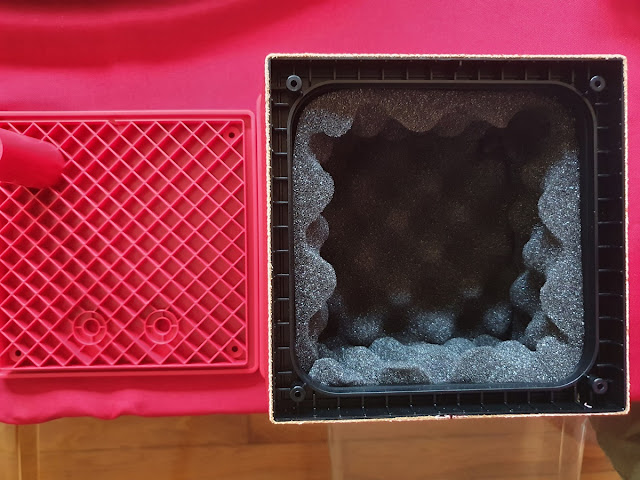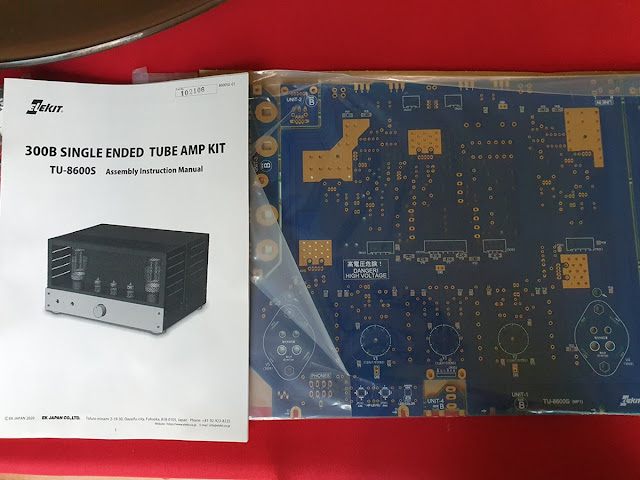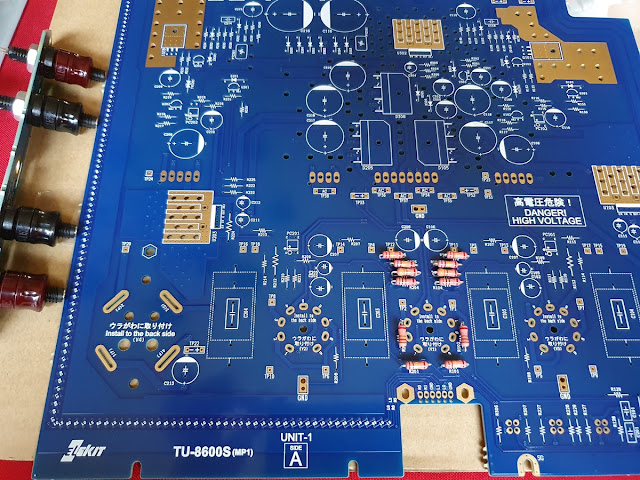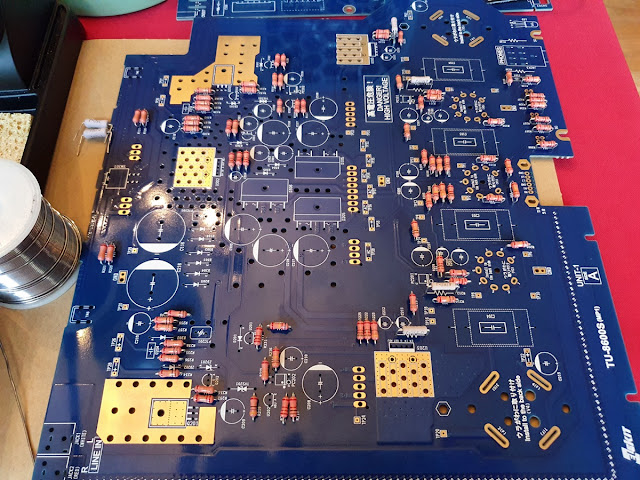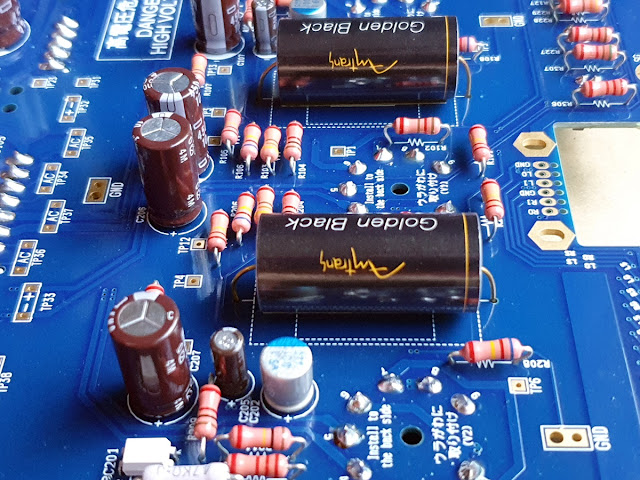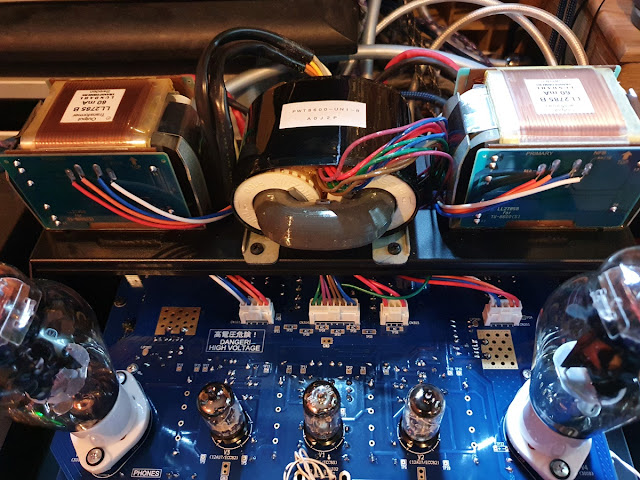Prologue
Mei impatiently twirled the ends of her long hair as she waited for Joe outside The Adelphi - Mecca of all audiophiles in Singapore. Minutes later, Joe appeared in a huff and drenched in perspiration - the humid tropical weather was especially unkind to office workers in their impractical attire.
"Took a leisurely walk here Joe ?" Mei commented sarcastically before defusing the sharp edge of her words with the sweetest smile ever.
Joe ignored her remark and quietly opened the door, heading straight for the shop that carried Devialet products. Mei had tasked him to find a suitable stereo system for her and he thought this fit the bill even though it was too much of a compromise by his exacting audiophile standards.
Mei and Joe were welcomed into the shop (Joe was a regular customer there) and after some refreshments, the salesperson ran them through the features of the Devialet Expert Pro amplifier. Mei sat down on the sofa with Joe standing behind her. She scrolled through the iPad lying on the sofa and within a minute, her favourite tunes were playing sweetly through the speakers in front of her. She twirled the knob of the remote control a few times and nodded approvingly. After a few tracks, she got up and walked over to the Devialet amplifier that was sitting on the top shelf of the component rack. She brushed her long slender fingers on the beautifully chromed chassis. It looked like a futuristic slab of metal, with just a single small circular window breaking the uniformity of the top panel.
"This is a very beautiful piece of art. Will you help me set it up ?" Mei smiled at the salesperson with her dimples barely showing.
"Ah! Of course Miss. We will set up the whole system for you. If you have an existing music library your boyfriend can help you connect it - it's really easy." The salesperson could smell the scent of a pending sale and the soon-to-be-earned commission was already warming the cockles of his heart.
"Boyfriend? Please!" Mei dismissively replied while rolling her eyes disapprovingly. Joe blushed at both the salesperson's words and the sting of Mei's response.
"It's a digital amp and you are paying a premium for a lifestyle product!" Joe protested at Mei's impulsive decision. Mei ignored Joe and continued to stroke the Devialet lovingly.
Thankfully, the salesperson managed to close the deal and the Devialet was delivered promptly to Mei's home with other components to make up her minimal and very tasteful music system.
Introduction
Mei and Joe are fictional characters, but there are many music lovers like Mei. They want a beautiful and good-sounding amplifier that can fit nicely into a modern home. Too many audio components look like something from a mad scientist's laboratory, or the control panel of a nuclear reactor.
My very first experience with Devialet dates back many years ago when the D-Premier was first launched. A fellow audiophile was very eager for me to listen to it, and he turned up at my doorstep with a large flat box under one arm (don't try this with conventional amplifiers!). It was an impressive experience, with a laidback and slightly warm sound that was more than powerful enough to power my speakers then - a pair of Focal Diablo Utopia bookshelf speakers. Positive impressions aside, there were some glaring omissions in my opinion, the prime ones being unstable wi-fi streaming and a lack of a USB port.
Was the D-Premier equal to my stack of components which were of equivalent value? Like a directionless corporate meeting, we respectfully agreed to disagree. He preferred the D-Premier, while I preferred my clumsy stack of components. He mischievously reminded me that the D-Premier was cheaper by a significant margin once I took into account the many footers, cables, power cords and rack space involved with my traditional stack.
The D-Premier cost close to S$ 20,000 when it was first released in Singapore. Thankfully, Devialet has worked hard over the years and the entry-level model (the subject of this review), the Expert 140 Pro is much more affordable.
Description
The Expert 140 Pro retains the sleek lines of the D-Premier. It is sexy enough to elicit envious glances from the most jaded audiophile. It has a more than passing resemblance to a high-end bathroom scale, and can even be mounted on the wall if you so desire.
A small port window shows various information including volume, source, and the status of SAM, and network connections. A single button powers up and shuts down the unit, while a sleek remote control controls commonly used functions (or as customised by the user).
Beauty here is not merely skin-deep. The Expert 140 Pro packs impressive amounts of technology and integration. Apart from being a powerful integrated amplifier, it also contains a DAC, phono stage (both MM and MC) and streamer.
The most controversial design point is that everything is handled in the digital domain. In the case of the phono stage, or analog input, the signal is converted to digital using a high quality A/D converter. Listening to your records after it has been digitised ? Sacre Bleu ! An optimist would of course focus on the benefits of having the signal in the digital domain, including the ability to process the signal using powerful DSP. Devialet is able to do this for both the partnering record cartridges (RAM) and speakers (SAM). The digital heavy lifting is carried out using a Quad-core 1 GHz CPU and 2 X SHARC 400 MHz DSP units.
Despite the compact form factor, the Expert 140 Pro packs a powerful punch. Power output is 140 W per channel into 6 ohms. Amplification is achieved with a hybrid design that combines a Class A amplifier (providing voltage amplification) with Class D modules (providing current). In a way, this concept is similar to the current-dumping design launched by Quad in 1975 which combined a Class A amplifier with "current-dumping" transistors to supply the necessary current. Class A designs are required to dissipate tremendous amounts of heat and a design that could deliver power equivalent to the Devialet would be massive and put out enough heat to warm a small room!
RAM and SAM
Record Adaptive Matching (RAMⓇ) is available in the Expert 220 Pro upwards and the Expert 140 Pro only allows a choice between MM/MC and adjustment of sensitivity. RAM allows the user to choose more than 256 combinations of resistance and capacitance, as well as a choice of equalisation curve.
Speaker Adaptive Matching (SAMⓇ) is a complex compensation model that attempts to correct sub-optimal speaker behaviour. Devialet measures the speaker in question to create a map of more than 60 parameters. The model is derived from measurement of the crossover network, speaker driver displacement, deformation, maximum displacement, speed and acceleration. Speaker models are continuously added to the SAM database, and the current database stands at more than 900 models. Conveniently, both my Vivid Giya G4 and Tannoy Kensington GR speakers are listed in the database.
A worthy mention is that SAM allows extension of your low-frequency response, with sensible protection built-in to prevent you from blowing up your speakers. It can be switched in and out on the fly using the remote control. By configuring your remote, it is possible to adjust the level of SAM correction from 0 % to 100 %.
Configurator
An online configurator allows you to set up your Devialet according to your preferences. You can configure your inputs to be either digital or analog (either line-level or phono), and apply SAM, and phono settings too.
This is just scratching the surface of what the configurator allows you to do. You can also (this is just a shortlist of features available) customise your remote control buttons, adjust the sampling rate of the ADC for analog inputs, set individual sensitivity levels, and adjust the maximum power output allowable from the unit.
The configuration file is then saved onto an SD card which is inserted into a slot at the back of the amplifier. You could create multiple configuration files to be saved on different SD cards should you wish to show off your amplifier in another person's system.
Operation and Ease of Use
Getting the Expert 140 Pro up and running was quite easy, save for the scare I got from the non-responsive remote. It turned out that the installed batteries were dead even though my unit was brand new.
The compact dimensions do require you to use a power cord with a slim IEC and banana plug terminated speaker cables. In an all-time first, an entry level Audioquest power cord is supplied in the box. In case you insist on using your massively sized power cords, a removable rear plate allows you to do this, losing a bit of stylishness in the process.
I never got the Devialet to stream from a DLNA server source, and neither did I install Devialet Air (the companion streaming software) as this runs on a personal computer (which I do not use in my main system). Instead, I used the Devialet as a Roon endpoint where it worked seamlessly. You can also use Airplay and Spotify Connect if you want to.
I did have the odd occasion where the Devialet failed to detect the SD card upon start-up. However, powering the unit down and re-inserting the SD card solved this. I found it odd that Devialet used such a primitive method of configuring the unit when everything else about the unit is technologically light-years ahead of the competition. The configuration file is a text file that can actually be viewed and edited, which seems dated. It would have been nice to be able to configure the Devialet using an app instead. Instead, the free app works as a substitute for the remote control.
My remote also had an issue with batteries, eating up fresh alkaline batteries every 2-3 months on average. No wonder, the factory-supplied batteries were flat on arrival! I've read of other users having similar issues, and this apparently can be fixed by the factory.
Sound Quality
The Devialet appeals as a lifestyle product and brings with it the misconceptions of an overpriced and inferior product. Actual use (I've had my set for more than two years) proves that this is a highly versatile product that is a viable and attractive alternative to a stack of components with spaghetti cabling everywhere! I have brought the Devialet along to listening sessions in other setups where they have always acquitted themselves, even against very expensive equipment.
The Devialet does have a subtly sweet and rich tone that is pleasant and inviting. The Class D detractors would have to leave in disappointment at this juncture. The midrange in particular is sweet, smooth and laidback. The bass quality is good, with power and a full textured midbass. In fact, you could argue that the Devialet takes the polite path rather than a sharp, or hyper analytical route. The high frequencies are also cleanly reproduced, without any noticeable evidence of roll-off or anomalies from the low-pass filter required for Class D designs to filter out ultra-sonic noise.
I would rate the Devialet's performance as reasonable for the price. However, enabling SAM lifts it up significantly. Apart from the very obvious boost in bass extension and power, there is an increase in focus and coherency that makes it very hard to revert back to SAM-less listening. Play it again Sam!
Conclusion
The Devialet is a superb all-in-one that demonstrates that convenience need not come at the expense of sound quality. It's a pity that traditionally-minded audiophiles may not give the Devialet due consideration.
With shrinking living spaces in Asia, this is the perfect product that ticks all the boxes :- looks, convenience, quality and price. Some may disagree that the Devialet is an affordable product, but I am convinced based on the many boxes it replaces, and the outstanding sound quality it delivers - Highly Recommended.
Epilogue
Mei sat gracefully on her sofa, listening to music from her new sound system. Joe had managed to convince her to install the Expert 140 Pro amplifier on top of her cantilevered TV rack. Discrete cabling ran to two very slim floorstanding speakers. The system was a perfect foil to Mei's character - graceful and elegant.
Her music collection had been ripped and stored on a dedicated Intel NUC PC that functioned as a Roon server. Joe had also subscribed to Tidal in case Mei wanted to explore new music just like she did when she came over to his home.
Standing up, Mei surveyed the very neat job that Joe had done in arranging everything. Her long flowing white dress showed off her slim waist and she glowed like an angel. Joe's heart skipped a beat and he bit his lower lip hard.
Devialet Expert Pro 140 Amplifier
Price : S$ 8,990






